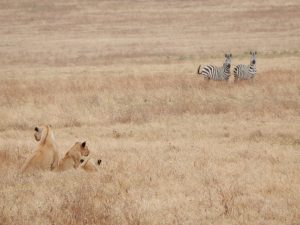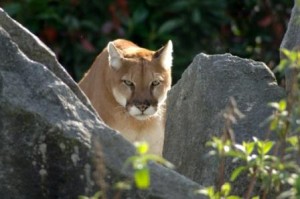It’s walking into the jaws of death,” I whispered. Two zebras had broken away from the herd and were moving through the tall grass toward three lions snoozing in the sun. One zebra lowered its head to graze. The other set a course straight for the lions.
Suddenly the dozing felines were alert. Heads raised, they watched lunch on the hoof come closer. One lioness crouched with the tip of its tail twitching. We could see the muscles bunching and releasing beneath her tawny coat as she stared intently at the zebra. Then, ever so slowly, she began to slink through the grass.

I was with a group of friends and family on safari in Tanzania’s Tarangire National Park. These weren’t the first lions and zebras we’d seen. But it was the first stalk and potential kill we’d witnessed. The silence in the jeep was palpable.
Then the lioness broke cover, racing toward the zebra. It turned to run but within a few strides the lion leapt and sunk its claws onto the black and white striped haunch. There was a collective “Oh!” from our vehicle. The zebra bucked and kicked with its rear legs causing the lion to lose its grip. It chased the fleeing animal for few metres, then gave up.
In the distance we saw the zebra limping and wondered if the deep, bloody gashes would become infected or attract other predators.

Although a similar colour, African lions are much bigger than cougars and live in large prides unlike the more solitary cougar. (We saw as many as 35 lions lounging together!) But the two species of big cats are equally opportunistic when it comes to prey. And the lion’s total focus and manner of approaching her prey was exactly how a cougar would respond to an unaware deer coming its way.
But the story wasn’t over yet. As the lioness sauntered back to her companions our guide said, “She’s coming back for a hug.” When the lion reached one of the others, she placed her head on its shoulder and the supine lion reached up to wrap her foreleg and paw around the other’s neck.
Mountain lions often hunt alone but on occasion a female with cubs or two young adults will tackle prey together. I wonder if cougars also provide consoling hugs if their prospective meal escapes?

